Disclosure: This article contains affiliate links. We may earn a commission from purchases at no extra cost to you, which helps our travel content.
The mist-shrouded shores of Sun Moon Lake harbor more than just breathtaking natural beauty—they cradle centuries of Thao indigenous craftsmanship waiting to be discovered. During my recent fieldwork studying cross-cultural wellness traditions in Taiwan, I found myself equally captivated by the remarkable artisanal economy that thrives in this lakeside community. What began as an academic interest evolved into a passionate appreciation for how traditional craft practices serve as living cultural archives, each item encoding generations of knowledge and identity.
Understanding Thao Indigenous Crafts: Cultural Context
The Thao people, one of Taiwan's officially recognized indigenous groups and the traditional stewards of the Sun Moon Lake region, represent one of the smallest tribal populations with approximately 800 members. Despite their modest numbers, their cultural footprint remains significant, particularly through their distinctive craft traditions.
Traditionally, Thao crafts served practical purposes—bamboo fish traps (vulan) for lake fishing, woven baskets for harvesting, and textile arts for ceremonial attire. Today, these functional items have evolved into cultural expressions that simultaneously honor tradition while adapting to contemporary aesthetics.
During my research interviews with several Thao artisans, a recurring theme emerged: craft-making represents an act of cultural preservation rather than mere commercial production. Elder craftspeople often spoke of feeling a profound responsibility to transmit techniques to younger generations. When you purchase authentic Thao crafts, you're not simply acquiring a souvenir but participating in what anthropologists term 'cultural sustainability'—supporting the economic conditions necessary for traditional knowledge transmission.
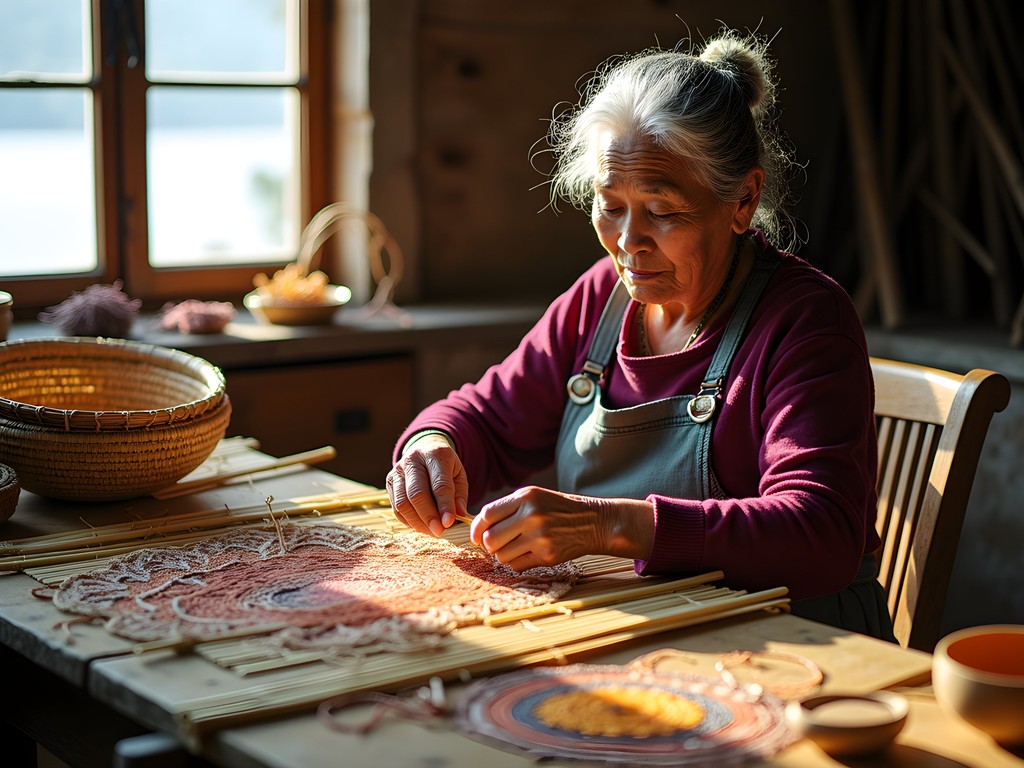
💡 Pro Tips
- Learn a few basic Thao phrases to show respect when interacting with indigenous vendors
- Ask permission before photographing artisans or their workshops
- Look for the official indigenous certification mark that guarantees authenticity
The Ita Thao Indigenous Market: A Cultural Hub
The epicenter of indigenous commerce at Sun Moon Lake is undoubtedly the Ita Thao Indigenous Market, located in the village of the same name on the eastern shore. Unlike the more commercialized areas near the Shuishe Visitor Center, Ita Thao maintains a distinctly authentic atmosphere that rewards the culturally curious traveler.
The market consists of approximately 60 stalls arranged along a gently sloping street leading from the lakeside pier up into the village proper. My research partner and I dedicated an entire afternoon to methodically exploring this cultural corridor, stopping frequently to document distinctive craft techniques and interview willing vendors.
The market operates daily, though weekends bring the fullest expression of activity with cultural performances often spontaneously occurring. I recommend arriving before 10 AM to observe many artisans actively working on their crafts—a fascinating window into production processes that afternoon visitors might miss.
After several hours of exploration, you'll likely need refreshment. I found the insulated water bottle indispensable during Taiwan's humid summer months, keeping water cool throughout extended market wanderings. The bottle's durability has proven essential through countless field expeditions.

💡 Pro Tips
- Visit on weekends for the fullest market experience including occasional cultural performances
- The best photography light occurs between 8-10am when morning sun illuminates the market street
- Many vendors accept credit cards, but smaller stalls prefer cash
Must-Have Indigenous Craft Souvenirs
Through systematic observation and interviews with both artisans and cultural preservation specialists, I've identified several indigenous craft categories that represent particularly meaningful acquisitions for the discerning traveler:
1. Bamboo Crafts: The Thao people have developed sophisticated bamboo-working techniques, creating everything from musical instruments to practical household items. Look for miniature vulan (fish traps) that demonstrate incredible technical precision while serving as elegant decorative pieces.
2. Textile Arts: Traditional Thao textiles feature distinctive geometric patterns in predominantly red, black, and white. While authentic hand-woven pieces command premium prices, they represent extraordinary cultural documents. For those seeking more accessible options, look for contemporary adaptations like table runners or scarves that incorporate traditional motifs.
3. Millet Wine: This traditional fermented beverage holds ceremonial significance for the Thao people. Several families produce small-batch varieties following ancestral methods. When purchasing, I recommend using a padded wine protector to safely transport bottles in your luggage—a lesson I learned after an unfortunate incident involving a broken bottle and ruined field notes.
4. Red Coral Jewelry: Historically significant in Thao culture, contemporary artisans create stunning jewelry incorporating red coral elements. These pieces often blend traditional symbolism with modern design sensibilities.
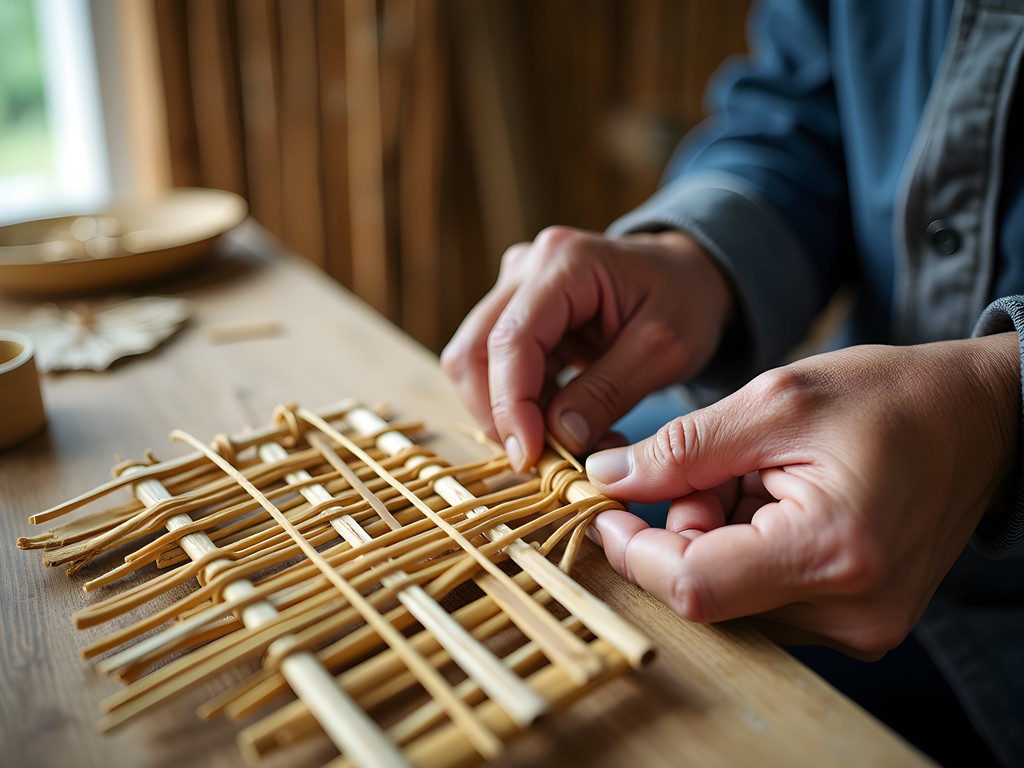
💡 Pro Tips
- Higher quality crafts are typically found deeper into the market, away from the main tourist thoroughfare
- Most artisans are happy to explain their techniques if approached respectfully
- Consider the cultural significance of patterns—some designs have specific ceremonial meanings
Ethical Shopping Considerations
As both an academic researcher and conscientious traveler, I approach indigenous markets with particular ethical considerations that I believe enhance both the shopping experience and its cultural impact:
Authentication Matters: Taiwan's Council of Indigenous Peoples has established certification programs that help identify authentic indigenous-made products. Look for official certification marks that guarantee both authenticity and that appropriate compensation reaches indigenous creators. During my fieldwork, I documented numerous instances of mass-produced imitations being sold alongside authentic crafts, making this verification particularly important.
Fair Pricing Perspectives: Quality indigenous crafts reflect hours of skilled labor, cultural knowledge, and often increasingly scarce natural materials. While bargaining is common in many Taiwanese markets, I approach indigenous craft purchases differently, recognizing that fair compensation supports cultural sustainability. When an elder Thao weaver explained that a single basket represents three days of labor, the price suddenly seemed remarkably reasonable.
Documentation & Context: To truly appreciate your purchases, consider investing in a travel journal to record the stories behind your acquisitions. Throughout my research, I've found that documenting the creator's name, the item's cultural significance, and the circumstances of purchase transforms souvenirs into meaningful cultural artifacts with rich personal associations.
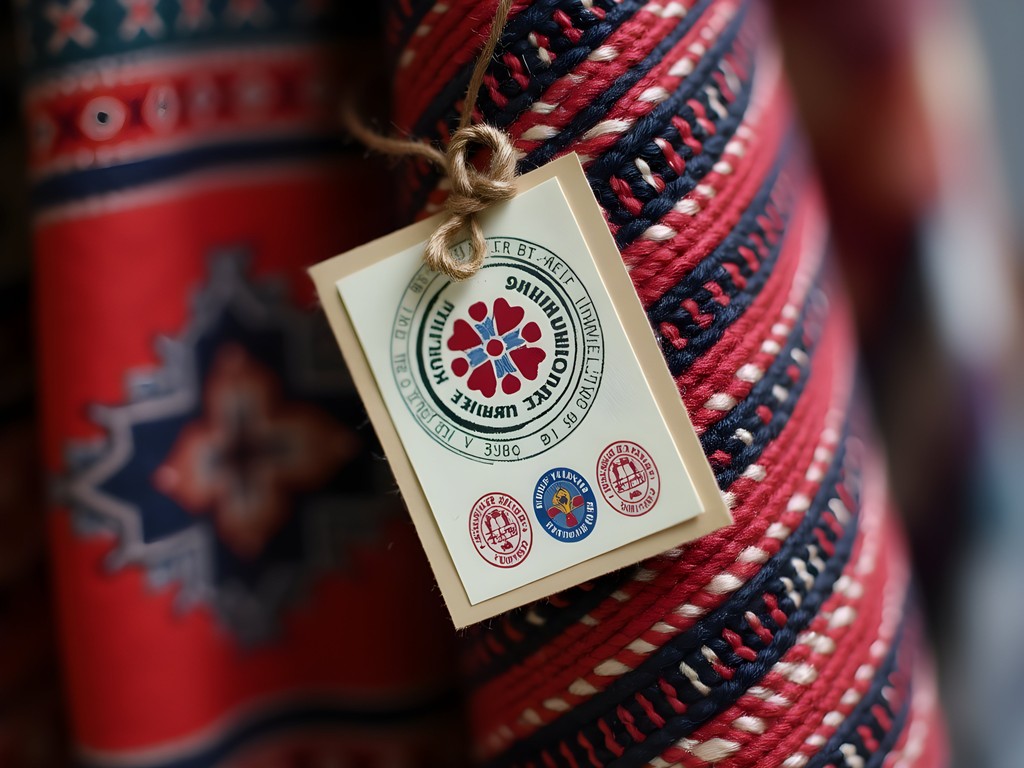
💡 Pro Tips
- Ask vendors about proper care instructions for textiles and organic materials
- Request business cards from artisans—many accept custom orders that can be shipped internationally
- Consider purchasing directly from workshop studios in the village for more personalized experiences
Beyond Shopping: Participatory Craft Experiences
For travelers seeking deeper engagement with indigenous craft traditions, several workshops around Sun Moon Lake offer hands-on experiences that transform shopping into participatory cultural exchange:
Bamboo Craft Workshops: The Thao Cultural Center offers 90-minute workshops where participants create simple bamboo items under elder guidance. Having participated in this workshop with my 10-year-old daughter during a family research trip, I can attest to its multigenerational appeal. The patient instruction and cultural context provided makes this an enriching experience beyond mere souvenir acquisition.
Natural Dye Demonstrations: Several textile studios demonstrate traditional plant-based dyeing techniques using locally harvested materials. The Yuchih Township Indigenous Cultural Hall offers scheduled demonstrations where visitors can dip pre-woven cotton squares into dye baths, creating personalized souvenirs while learning about ethnobotanical knowledge.
Photography Considerations: If you're documenting these experiences, I recommend using a compact camera with good low-light performance, as many workshop spaces have limited natural lighting. This camera has been invaluable during my fieldwork for capturing detailed craft processes without being obtrusive.
These participatory experiences typically require advance reservation, especially during peak tourist seasons. The Sun Moon Lake National Scenic Area Administration Office can facilitate bookings and provide current scheduling information.

💡 Pro Tips
- Book workshops at least 3 days in advance during high season (summer and national holidays)
- Wear clothes you don't mind getting stained during dyeing workshops
- Bring a translator app if you don't speak Mandarin, as some elder instructors have limited English proficiency
Final Thoughts
The indigenous markets and craft studios of Sun Moon Lake offer far more than tourist trinkets—they provide windows into living cultural traditions that have adapted to modern circumstances while maintaining core identities. As both an academic researcher and appreciative traveler, I've found that approaching these spaces with informed curiosity transforms shopping from mere acquisition into meaningful cultural dialogue.
The items you bring home—whether a precisely woven bamboo fish trap or a textile incorporating traditional motifs—represent more than decorative souvenirs. They embody complex knowledge systems, cultural resilience, and economic lifelines for communities working to maintain traditional practices in a rapidly changing world.
I encourage you to allocate sufficient time for these market explorations, ideally spreading your shopping across multiple days to allow for reflection and return visits. The relationships between people, place, and craft at Sun Moon Lake reveal themselves gradually, rewarding the unhurried visitor with insights that transcend conventional tourism. As you depart with carefully selected treasures, you carry not just objects but threads of connection to one of Taiwan's most distinctive cultural landscapes.
✨ Key Takeaways
- Look for official indigenous certification marks to ensure authenticity and ethical purchasing
- Allocate time for workshop participation to deepen your understanding of craft traditions
- Document the stories and creators behind your purchases to transform souvenirs into meaningful cultural artifacts
📋 Practical Information
Best Time to Visit
year-round, with spring (March-May) and fall (September-November) offering pleasant temperatures
Budget Estimate
$50-150 USD for quality indigenous crafts; $20-40 for workshop experiences
Recommended Duration
2-3 days to fully explore markets and participate in workshops
Difficulty Level
Beginner

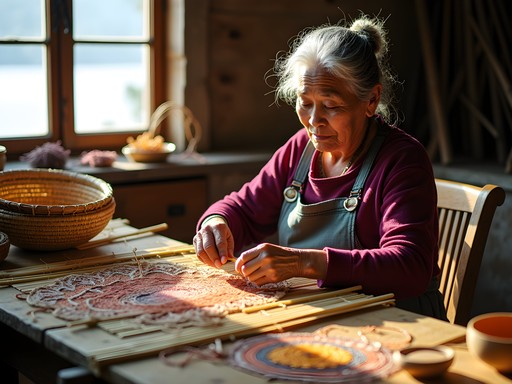
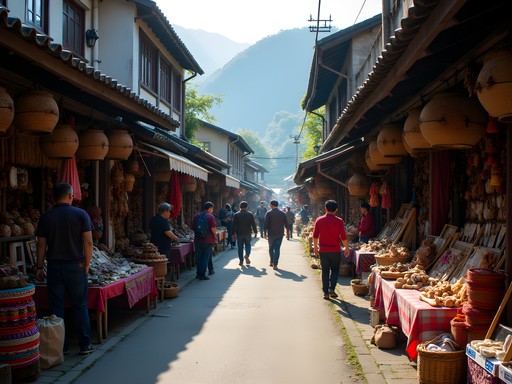

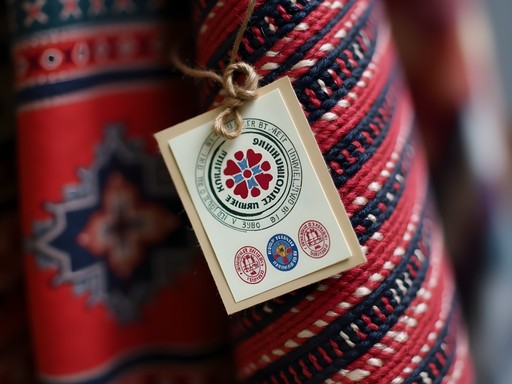











Comments
cloudyskies
Those bamboo crafts are stunning! Great photos!
Hannah Woods
Having spent three weeks documenting craft traditions around Taiwan, I found the Thao weaving techniques particularly fascinating. One thing I'd add to this excellent guide: try to visit on weekday mornings if possible. Not only is it less crowded, but many artisans are more willing to demonstrate their techniques when they're not rushed. I spent an hour with an elder who showed me the traditional way they harvest and prepare the reeds for weaving - something that wouldn't have happened on a busy weekend. Also worth noting that many crafts have seasonal variations based on available materials, so what you find in summer versus winter can differ substantially.
starmate
This is super helpful! I've rescheduled my visit to a Thursday morning based on your advice. Can't wait!
redking
This guide is AMAZING! Just what I needed before my trip next month! Those woven bags look incredible - definitely going to pick one up. Anyone know if they're durable enough for everyday use or more decorative?
luckyrider
I've been using mine for groceries for months and it's holding up great! The stitching is super sturdy.
Taylor Moreau
Excellent piece on cultural context, Landon. I've been researching indigenous craft economies across Asia for a business sustainability report, and Sun Moon Lake's model is particularly interesting. The balance they've struck between tourism accessibility and cultural preservation is noteworthy. I particularly appreciated your section on ethical shopping considerations - the point about asking permission before photographing artisans at work is crucial and often overlooked. I found using my translation app invaluable for having deeper conversations with the craftspeople about their techniques and materials. The mutual respect that comes from attempting to communicate in their language opens many doors.
hikingking8855
Those beaded necklaces in your third photo are gorgeous! Did you end up buying one?
redking
I got one of those on my trip! The lady who made it told me each color represents different elements in Thao culture. Been wearing it non-stop since!
starmate
Great post! I'm visiting in October - are there specific days when the Ita Thao market is busier/better to visit? Also wondering if it's easy to get there by public transport?
Hannah Woods
Not the author but I was there earlier this year - weekends are definitely busier but have more vendors. The local bus system around the lake is excellent and stops right at Ita Thao. Just grab a schedule from your hotel!
luckyrider
Just got back from Sun Moon Lake last month and spent a full day at the Ita Thao market! The woven bamboo crafts were my favorite - picked up a beautiful tea canister with traditional patterns that now has prime spot in my kitchen. The artisan showed me how they've been making these for generations. Definitely take cash though - some of the smaller vendors don't accept cards and you don't want to miss out on the best stuff!
starmate
Did you try any of the food at the market? Planning to visit in October!
luckyrider
Oh yes! Don't miss the millet wine and the wild boar sausages. There's also this amazing tea-infused bread that's super unique to the area!
culturetrekker
Those wooden carvings look incredible! Love finding authentic souvenirs like this instead of the usual tourist stuff.
TaiwanExplorer
If you're serious about buying quality crafts, try to go on weekdays! The weekend crowds can be overwhelming and the best artisans sometimes don't even set up on super busy days. Also, don't miss the small workshop behind the main market where an elder Thao woman demonstrates traditional weaving techniques - no English but her daughter usually translates. I used my travel phrasebook which helped a lot with basic communication outside the main tourist areas.
taiwanexplorer88
Just got back from Sun Moon Lake last week and visited the Ita Thao market after reading this post! That section about ethical shopping considerations really helped. I bought a beautiful hand-woven bag directly from the artisan and she explained all the symbols in the pattern. Also tried the millet wine - so unique! The prices were higher than I expected but totally worth it for authentic crafts. The market gets super crowded in the afternoon though, wish I'd gone earlier.
Venture X
Premium card with 2X miles, $300 travel credit, Priority Pass